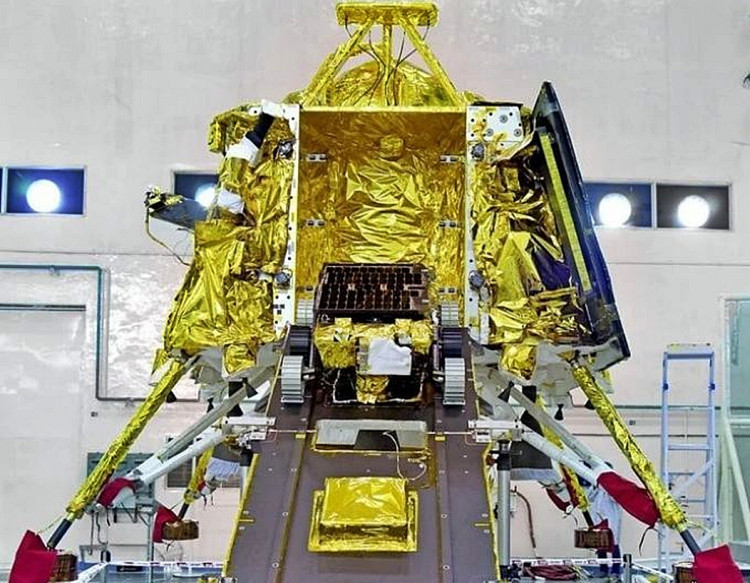India on Monday aborted the launch of Chandrayaan-2, its second Moon mission, due to an unspecified "technical snag."
The Indian Space Research Organization (ISRO) scrubbed the $150 million mission with 56 minutes to go before lift-off of the mammoth three-stage Geosynchronous Satellite Launch Vehicle Mark-III, or GSLV Mk-III from the Satish Dhawan Space Centre.
"A technical snag was observed in launch vehicle system at 1 hour before the launch," said ISRO in a statement. "(A) the revised launch date will be announced later."
Knowledgeable sources cited by media revealed the technical snag was likely due to improper fuel pressure in the huge rocket's engines. An hour earlier, ISRO tweeted that the pumping of liquid hydrogen into the rocket's cryogenic stage, the last stage of GSLV Mk-III, had been completed.
GSLV Mk-III is the most powerful rocket developed by ISRO. It can carry payloads of up to 4,000 metric tons into Low Earth Orbit (LEO). Its first stage consists of strap-on boosters burning solid fuel.
The second stage has a core booster burning liquid fuel while the third is equipped with a cryogenic engine that ignites liquid hydrogen.
Chandrayaan-2 aimed to place an Indian rover named Pragyaan on the lunar surface, a feat accomplished only by the US, Russia, and China. The entire mission consists of an orbiter, a lander named Vikram and the lunar rover.
The main scientific objective of the Chandrayaan-2 mission is to map the location and abundance of lunar water. Chandrayaan-2 will soft land its lander and rover in a high plain between two craters -- Manzinus C and Simpelius N -- at a latitude of about 70° south.
The wheeled rover will travel on the lunar regolith and perform on-site chemical analysis. It can relay data to Earth through the Chandrayaan-2 orbiter and lander.
Had Chandrayaan-2 launched at its scheduled time of 2:51 a.m. on July 15, it would have taken place in the same week as the 50th anniversary of the historic Apollo 11 mission that landed the first humans on the Moon on July 20, 1969.
The first human to set foot on the Moon, astronaut Neil Armstrong, stepped onto the dusty lunar regolith on July 21 followed by his mate, Buzz Aldrin. Apollo 11 blasted-off from the John F Kennedy Space Center in on July 16.






